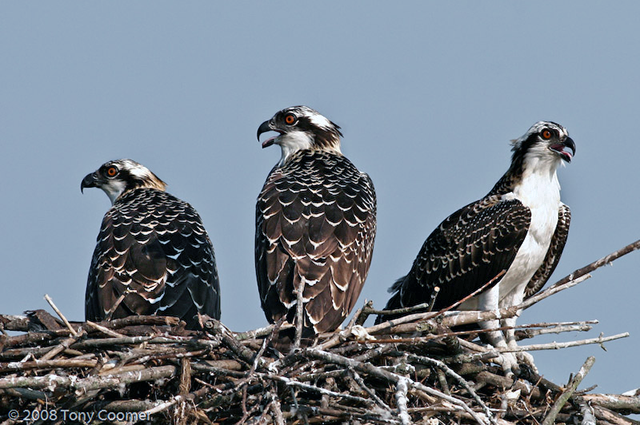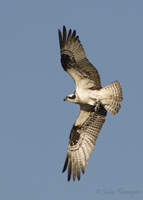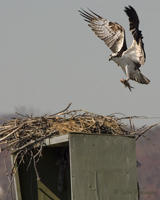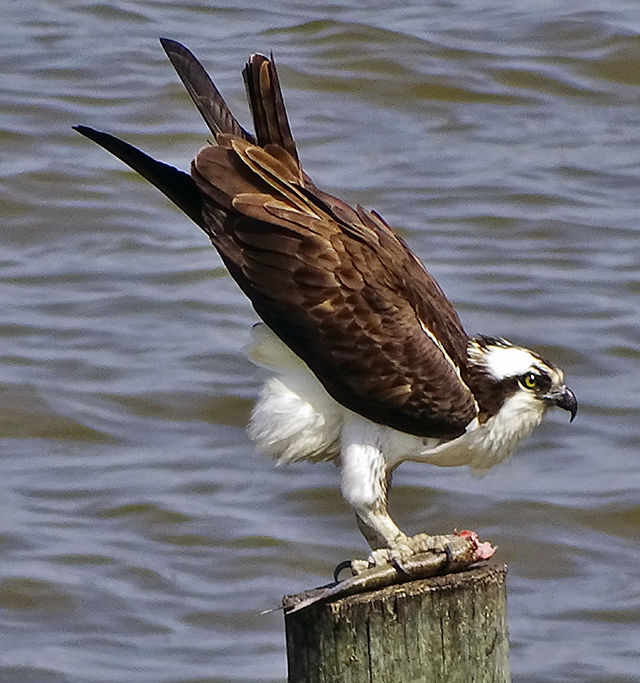
 |
 |
| Photos top © Tony Coomer, Occoquan Bay National Wildlife Refuge, Woodbridge, VA Middle row © Julia Flanagan Below © Gary Myers Text by Ellen Katinas |
|

Osprey Voyager, fisherman, engineer, success story – the Osprey plays many roles! Some live year-round in Florida and Baja California, but most are extensive migrators, all the way from Canada to Central and South America, sometimes logging over 160,000 miles during a lifetime. They are accomplished anglers (at least 25 and up to 70% of dives produce a catch). After circling high above the water for an average of 12 minutes, they dive, plunging down as far as 3 feet. They eat their fish live. Flying home with a catch, they align their prey head first into the wind, cutting down resistance to boost speed. A male osprey helping his mate with nest building can deftly snatch dead sticks from a tree he passes in flight. About those nests . . . they are big enough to seat a human, measuring 3 to 6 feet in diameter and 10 to 13 feet deep. Although the male brings home material, the female is the one who builds. Last and best of all, the Osprey is a conservation success story: from 1966 to 2015, their population increased by 2.5% per year. This growth was spurred by pesticide bans as well as human construction of wooden platforms for their huge nests. However, ospreys are still listed as endangered or threatened in some inland states. Sadly, a growing cause of death is entanglement, caused by use of bailing twine and discarded lines in nest construction. They like to live by shallow, fish-filled bodies of water, including rivers, lagoons, swamps, and marshes. |





